
This site provides a detailed overview of atoms. Content explores an atom's structure, as well as what ions are, how atoms bond, what compounds are (including how to name compounds), and what isotopes are.

This site provides a detailed overview of atoms. Content explores an atom's structure, as well as what ions are, how atoms bond, what compounds are (including how to name compounds), and what isotopes are.
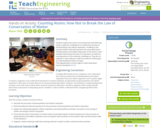
Students explore the science of microbial fuel cells (MFCs) by using a molecular modeling set to model the processes of photosynthesis and cellular respiration—building on the concept of MFCs that they learned in the associated lesson, “Photosynthesis and Cellular Respiration at the Atomic Level.” Students demonstrate the law of conservation of matter by counting atoms in the molecular modeling set. They also re-engineer a new molecular model from which to further gain an understanding of these concepts.

Get a quick overview of atomic theory, from early theories to modern understanding of the atom. [1:10]

This in-depth video tutorial explains the rules for filling orbitals with electrons in an atom. [11:28]

Celebrate National Periodic Table Day (February 7) with us! This week on Live Science, we will be talking about the process of discovering, or creating, new elements. So far, Berkeley Lab has helped discover 16 elements on the periodic table! Are we close to finding another
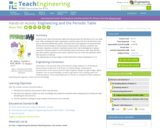
Students learn about the periodic table and how pervasive the elements are in our daily lives. After reviewing the table organization and facts about the first 20 elements, they play an element identification game. They also learn that engineers incorporate these elements into the design of new products and processes. Acting as computer and animation engineers, students creatively express their new knowledge by creating a superhero character based on of the elements they now know so well. They will then pair with another superhero and create a dynamic duo out of the two elements, which will represent a molecule.
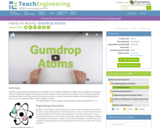
Students use gumdrops and toothpicks to make lithium atom models. Using these models, they investigate the makeup of atoms, including their relative size. Students are then asked to form molecules out of atoms, much in the same way they constructed atoms out of the particles that atoms are made of. Students also practice adding and subtracting electrons from an atom and determining the overall charges on atoms.
![An Introduction to Chemistry: The Structure of the Elements [Audio Book]](https://openspace.infohio.org/static/newdesign/images/materials/default-thumbnail-index.png)
The structure of the atom is uncovered in this interactive tutorial. Discover the different particles of the atom and learn their charges and how they can affect the overall atom.

To better understand electricity, students investigate the properties of materials based on their ability to dispel static electricity. They complete a lab worksheet, collect experimental data, and draw conclusions based on their observations and understanding of electricity. The activity provides hands-on learning experience to safely explore the concept of static electricity, learning what static electricity is and which materials best hold static charge. Students learn to identify materials that hold static charge as insulators and materials that dispel charge as conductors. The class applies the results from their material tests to real-world engineering by identifying the best of the given materials for moving current in a solar panel.

Understand and appreciate the research conducted at Jefferson Lab about the smallest particle, the quark.

Students act as engineers to apply what they know about how circuits work in electrical/motorized devices to design their own battery-operated model motor vehicles with specific paramaters. They calculate the work done by the vehicles and the power produced by their motor systems.
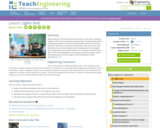
This lesson introduces the concept of electricity by asking students to imagine what their life would be like without electricity. Two main forms of electricity, static and current, are introduced. Students learn that electrons can move between atoms, leaving atoms in a charged state.

Make an Atom Lesson.
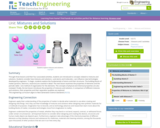
Through three lessons and their four associated activities, students are introduced to concepts related to mixtures and solutions. Students consider how mixtures and solutions and atoms and molecules can influence new technologies developed by engineers. To begin, students explore the fundamentals of atoms and their structures. The building blocks of matter (protons, electrons, neutrons) are covered in detail. The next lesson examines the properties of elements and the periodic table one method of organization for the elements. The concepts of physical and chemical properties are also reviewed. Finally, the last lesson introduces the properties of mixtures and solutions. A comparison of different mixtures and solutions, their properties and their separation qualities are explored.
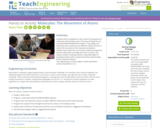
Students work as engineers to learn about the properties of molecules and how they move in 3D space through the use of LEGO MINDSTORMS(TM) NXT robotics. They design and build molecular models and use different robotic sensors to control the movement of the molecular simulations. Students learn about the size of atoms, Newman projections, and the relationship of energy and strain on atoms. This unique modular modeling activity is especially helpful in providing students with a spatial and tactile understanding of how molecules behave.

Learn about the Bohr model of the atom where the electrons exist in energy levels or shells. [2:50]

The Nobel Physics Chairman made this speech when presenting the Prize to Chadwick. It clearly explains the importance and depth of Chadwick's work. Site by Nobel e-Museum.

Website for the PBS series "A Science Odyssey." Numerous opportunities to explore the people and discoveries of science.

Grab your magnifying glass and your notepads! In this Nov. 20, 2020, Live Science presentation, learn how Berkeley Lab physicists investigate the mysterious world of particle physics. They will share the patterns and clues they use to detect particles as well as the tools they use to find them!

In this unit, students improve reading and writing standards and skills as they explore biographies of famous leaders and change agents.